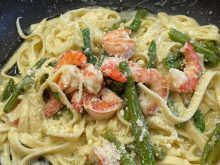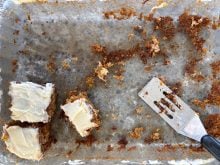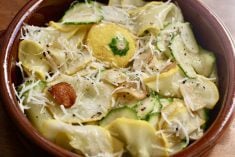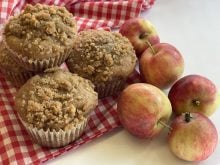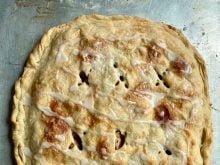Eggs have been vilified in the past for their cholesterol content, but in moderation there should be no concern.
They are a low calorie source of high quality protein at only 70 calories for one large egg, but they also offer more than 10 essential nutrients. Eggs are an excellent source of iron and vitamins A, D and B12.
Egg labelling confuses consumers. What is the difference between farm fresh or natural and free range? Why does one egg contain omega 3 and the next doesn’t? Is there certification to guarantee you get what you pay for?
Read Also

Know what costs are involved in keeping crops in the bin
When you’re looking at full bins and rising calf prices, the human reflex is to hold on and hope for more. That’s not a plan. It’s a bet. Storage has a price tag.
Only organic eggs have certification. This assures consumers that hens have been fed organic feed, given no growth hormones or antibiotics and provided with living conditions that pass animal welfare standards.
Omega 3 labelled organic eggs also confirms that hens have been fed flax.
Ninety percent of egg-laying hens in Canada are in cages. Five or more hens share a cage without nesting boxes. Eggs roll out onto conveyor belts.
Free run means chickens can move around in a barn but don’t necessarily have access to the outdoors. Free range means the hens run around outside, weather permitting.
Eggs at grading stations are received, washed, sanitized, candled, weighed, packed into containers and labelled with the federal grade. Eggs bought directly from farmers most likely won’t be sanitized.
An egg has a natural protective coating called a bloom, which seals the pores.
It is illegal in Ireland to wash Grade A hen eggs because it is claimed that bacteria can penetrate the shell if the natural protective barrier is removed.
Scotch eggs
Scotch eggs originated from a need for hearty travel food. I used a lean spiced pork sausage and panko bread crumbs. Use oil with a high smoke point such as canola or peanut oil.
- 4 eggs, boiled
- 3 large sausages, preferably a lean spicy Italian style
- 1 c. flour 250 mL
- 1 egg, lightly beaten
- 1 c. bread crumbs 250 mL
- frying oil
Prepare the sausage by squeezing from casing and forming into four balls. Flatten each ball into a thin patty. Place flour, egg and bread crumbs into separate bowls.
Peel eggs and dry thoroughly. Wrap each egg in sausage and pinch so there are no holes exposing the egg. Roll in flour, then egg and finally bread crumbs.
Cook one or two at a time in oil heated to 350-375 F in a deep pot. Turn occasionally if they are not totally submerged in oil. Fry until browned. Remove and drain on paper towel lined plate. Serve hot or at room temperature. Serve with ketchup, mustard or plain.
Pickled eggs
Older eggs peel much more easily than fresh eggs. Pickled eggs are a great snack, easily sliced into a salad and can be made into devilled eggs or a sandwich.
- 12 hard boiled eggs, peeled
- 1 c. pickling vinegar 250 mL
- 1 1/2 c. water 500 mL
- 1 tbsp. sugar 15 mL
- 2 tsp. pickling spice 10 mL
- 1 tsp. kosher salt 5 mL
- yellow or white onions, thinly sliced in rings
Combine vinegar, water, sugar, pickling spices and salt in small saucepan. Bring to boil, stirring frequently, until sugar dissolves. Reduce heat to low, cover and simmer for 10 minutes.
Place eggs in jar layered with sliced raw onions. Pour hot liquid over to fill jar. Seal jar with lid.
To make hard-boiled eggs, place eggs in a single layer in a saucepan. Cover with at least one inch (2.5 cm) of cold water over the top of the eggs. Cover saucepan and bring to a boil over high heat.
Immediately remove pan from heat. With lid on, let eggs sit in hot water for 12 minutes. Drain and immediately put eggs in cold water until cooled. Crack the blunt end of the egg and then peel with a spoon.
Florentine crespelle
In France it is a crepe, in Russia a blini and in Italy it’s a crespelle. This thin pancake replaces cannelloni noodles. Béchamel is a fancy name for white sauce.
- 2/3 c. water 160 mL
- 1/2 c. all purpose flour 125 mL
- 3 large eggs
- 1/4 tsp. salt 1 mL
- 1 tbsp. fresh chopped or 15 mL
- 1 tsp. dried herbs 5 mL
- unsalted butter
- 1 c. ricotta cheese 250 mL
- 1/2 bunch fresh spinach or
- 1/2 package frozen spinach
- 1 c. milk 250 mL
- 1 tbsp. butter 15 mL
- 1 tbsp. flour 15 mL
- salt and pepper
- 1/4 c. tomato puree 60 mL
- grated pecorino or parmesan cheese
- olive oil
Preheat oven to 350 F.
For the crespelle, add flour, water, two eggs and salt to a blender. Puree until smooth and set aside. Add herbs. Rest batter for 30 minutes before using. Can be made up to a day in advance.
Heat a non-stick, lightly greased pan to medium heat and pour a 1/4 cup of batter into the centre of the pan, swirling to cover.
Remove from pan and lay in single layer on tea towel. Can be made up to three days in advance. Place waxed paper between each crespelle and wrap tightly with plastic wrap and refrigerate.
Make béchamel sauce by adding one tablespoon (15 mL) butter to a saucepan over low heat and when melted, add one tablespoon (15 mL) flour and mix until smooth. Carefully cook for a couple of minutes, stirring constantly.
Slowly whisk in the milk until smooth and bring to a boil, whisking continuously. Cook for five minutes or until thickened. The sauce should coat the back of a spoon. Remove from heat and season with salt, pepper and if desired, a little nutmeg. Set aside.
For the filling, take the freshly blanched, drained and squeezed spinach and chop finely. It should make about 1 1/2 cups of spinach. Place in a bowl with the ricotta, one slightly beaten egg and two tablespoons (30 mL) grated cheese and mix to combine.
Spread two heaped tablespoons (30 mL) of ricotta filling down the centre of a crespelle, roll into a cigar shape and place in a greased oven proof dish, seam side down. Spoon béchamel sauce over and top with a few decorative splashes of tomato puree.
Sprinkle with a handful of grated cheese and place in the oven for 15 to 20 minutes or until golden brown. Serves four. Serve immediately.
Sarah Galvin is a home economist, teacher and farmers’ market vendor at Swift Current, Sask., and a member of Team Resources. She writes a blog at allourfingersinthepie.blogspot.ca. Contact: team@producer.com.



